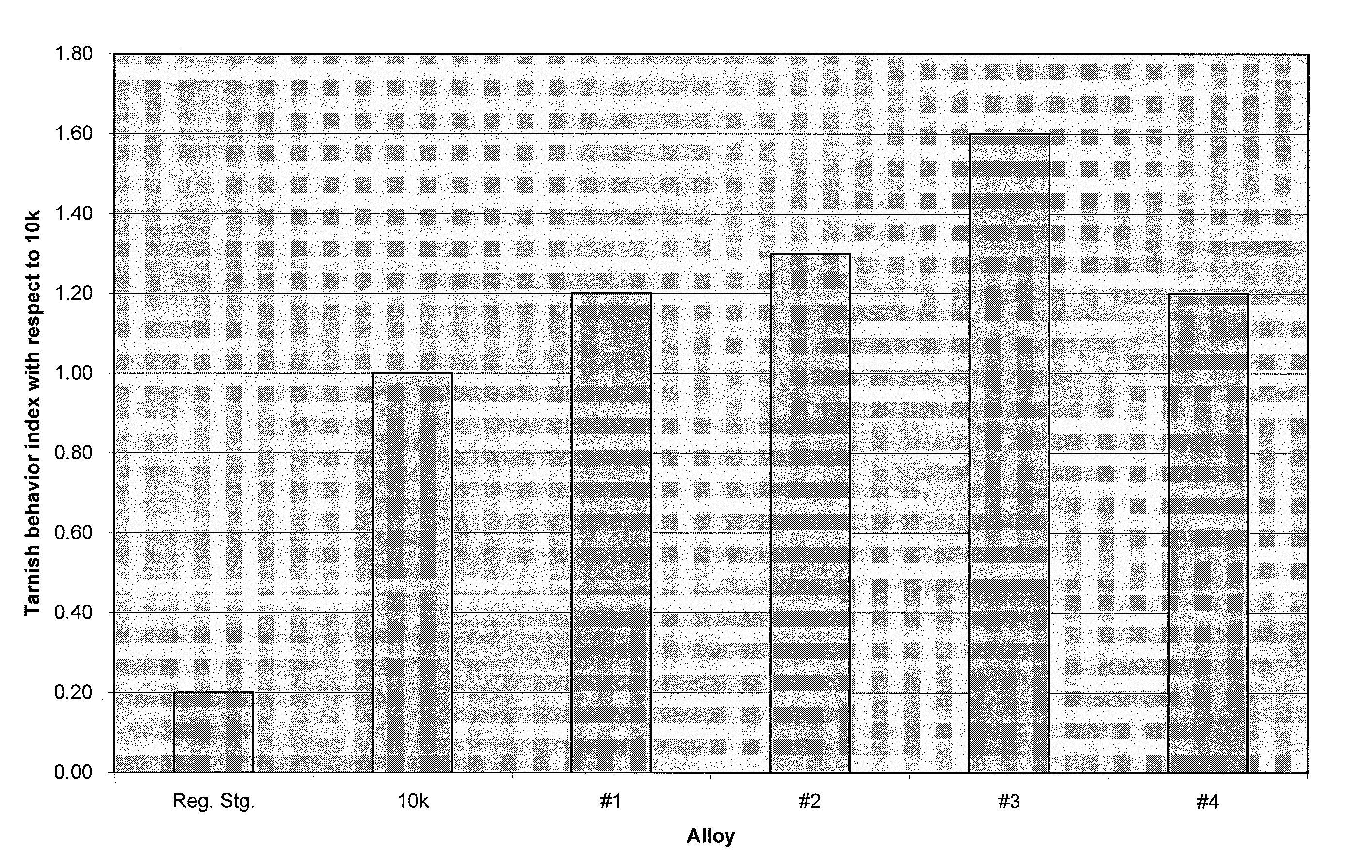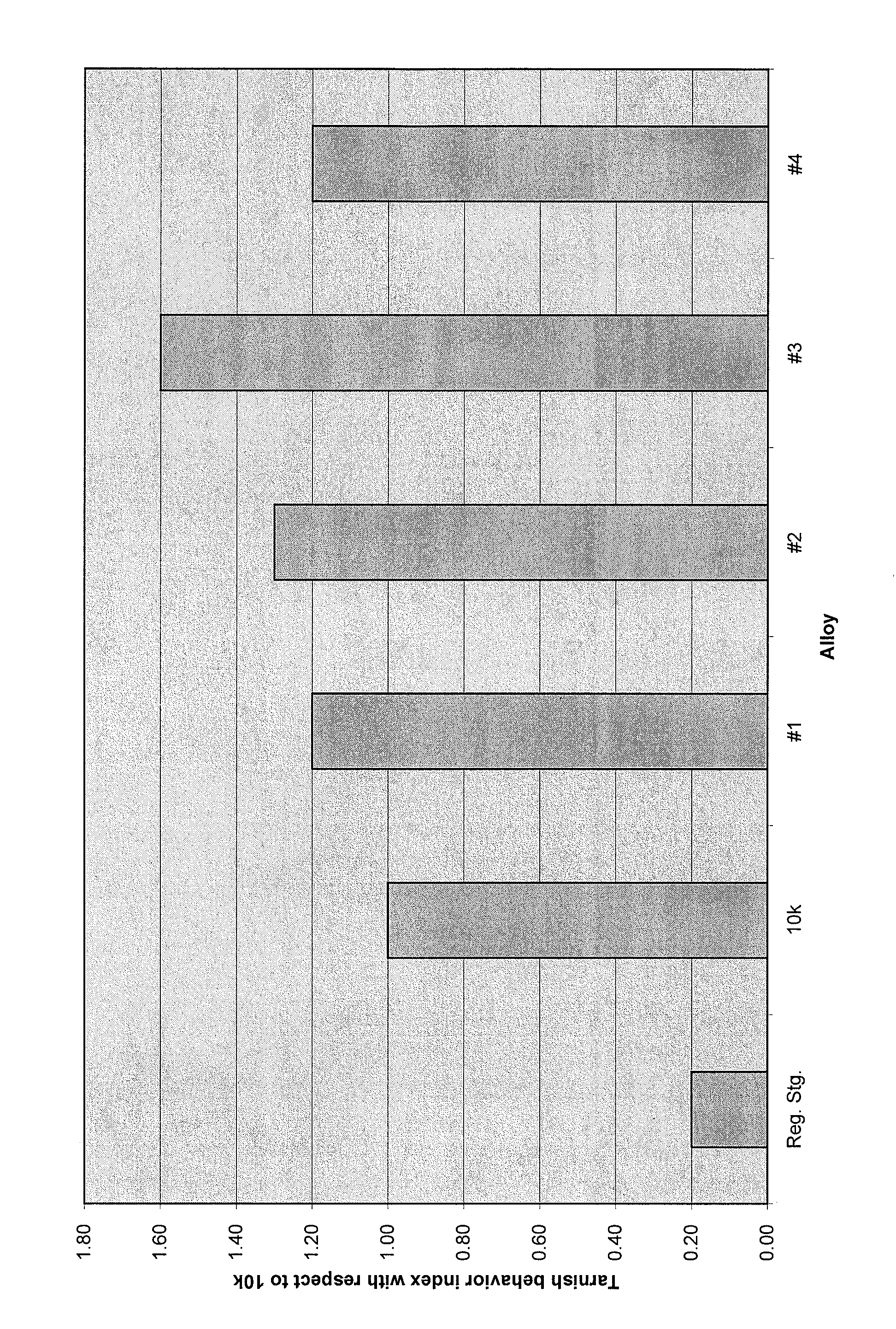Silver alloy with high tarnish resistance
- Summary
- Abstract
- Description
- Claims
- Application Information
AI Technical Summary
Benefits of technology
Problems solved by technology
Method used
Image
Examples
Embodiment Construction
,” one will understand how the features of the preferred embodiments provide advantages over prior art.
[0007]The term Tarnish Behavior Index or TBI as used herein refers to the ratio between the measured exposure time of noticeable tarnish for a tested alloy (T) and the measured exposure time of noticeable tarnish for common 10K yellow gold alloy (T10k). Therefore, in general, the values of TBI1 describe the alloys that show better than 10K gold alloy tarnish behavior.
[0008]In one embodiment, the alloy composition consists essentially of about 92%-97% by weight silver, about 0.25%-1% by weight palladium, 0%-0.5% by weight platinum, about 0%-0.5% by weight gold, about 0.4%-0.45% by weight copper, about 1.45%-2.75% by weight zinc, about 0.1%-0.35% by weight tin, about 0.85%-1% by weight indium, about 0.05% by weight silicon, about 0%-0.35% germanium, about 0.2%-0.25% by weight gallium, about 0.2%-0.25% by weight cobalt, and about 0-0.05% ruthenium. Preferably, the tarnish behavior ind...
PUM
| Property | Measurement | Unit |
|---|---|---|
| composition | aaaaa | aaaaa |
| compositions | aaaaa | aaaaa |
| weight | aaaaa | aaaaa |
Abstract
Description
Claims
Application Information
 Login to View More
Login to View More - R&D
- Intellectual Property
- Life Sciences
- Materials
- Tech Scout
- Unparalleled Data Quality
- Higher Quality Content
- 60% Fewer Hallucinations
Browse by: Latest US Patents, China's latest patents, Technical Efficacy Thesaurus, Application Domain, Technology Topic, Popular Technical Reports.
© 2025 PatSnap. All rights reserved.Legal|Privacy policy|Modern Slavery Act Transparency Statement|Sitemap|About US| Contact US: help@patsnap.com


